SLUSDK0A August 2020 – March 2021 BQ25171-Q1
PRODUCTION DATA
- 1 Features
- 2 Applications
- 3 Description
- 4 Revision History
- 5 Pin Configuration and Functions
- 6 Specifications
- 7 Detailed Description
- 8 Application and Implementation
- 9 Power Supply Recommendations
- 10Layout
- 11Device and Documentation Support
- 12Mechanical, Packaging, and Orderable Information
Package Options
Mechanical Data (Package|Pins)
- DRC|10
Thermal pad, mechanical data (Package|Pins)
- DRC|10
Orderable Information
8.2.1.3 Application Curves
CIN = 1 µF, COUT = 1 µF, VIN = 5 V, VOUT = 3.8 V, ICHG = 250 mA (unless otherwise specified)
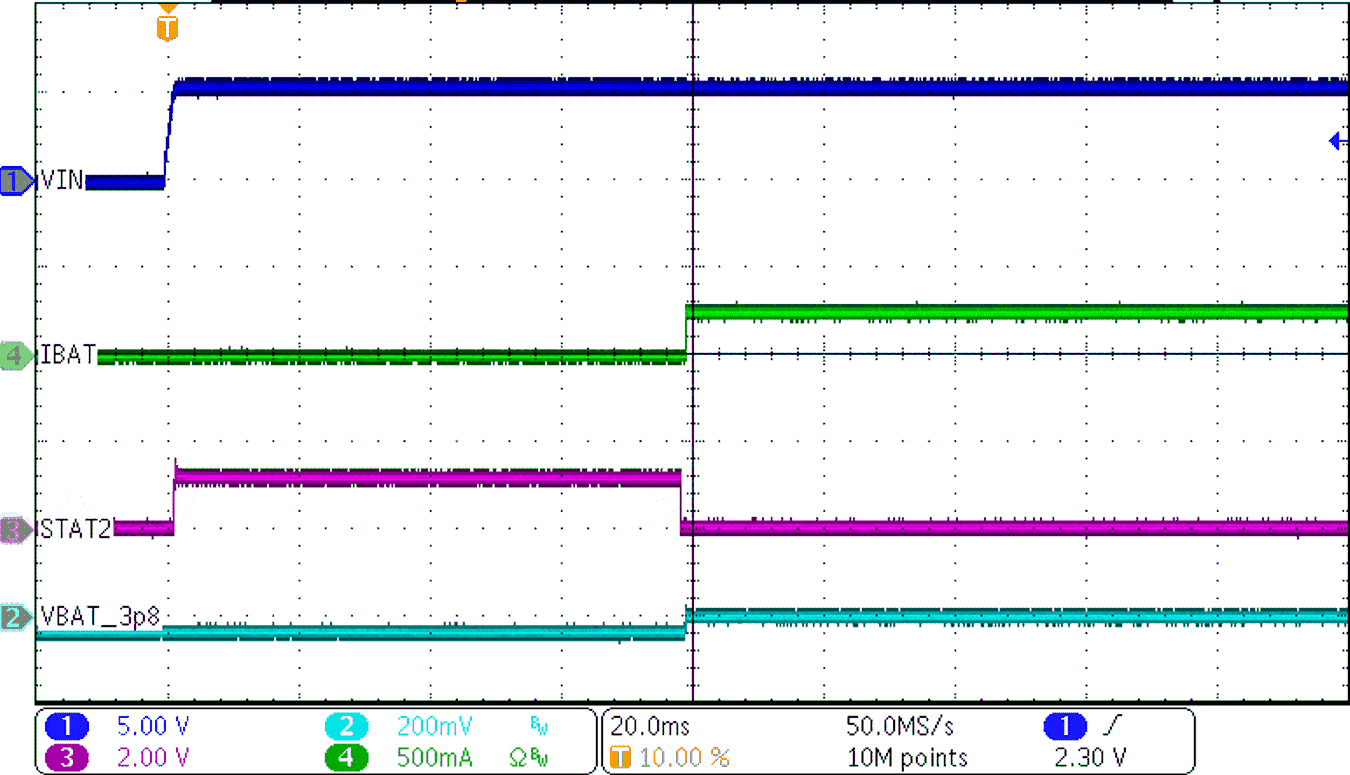
| RISET = 1.2 kΩ |
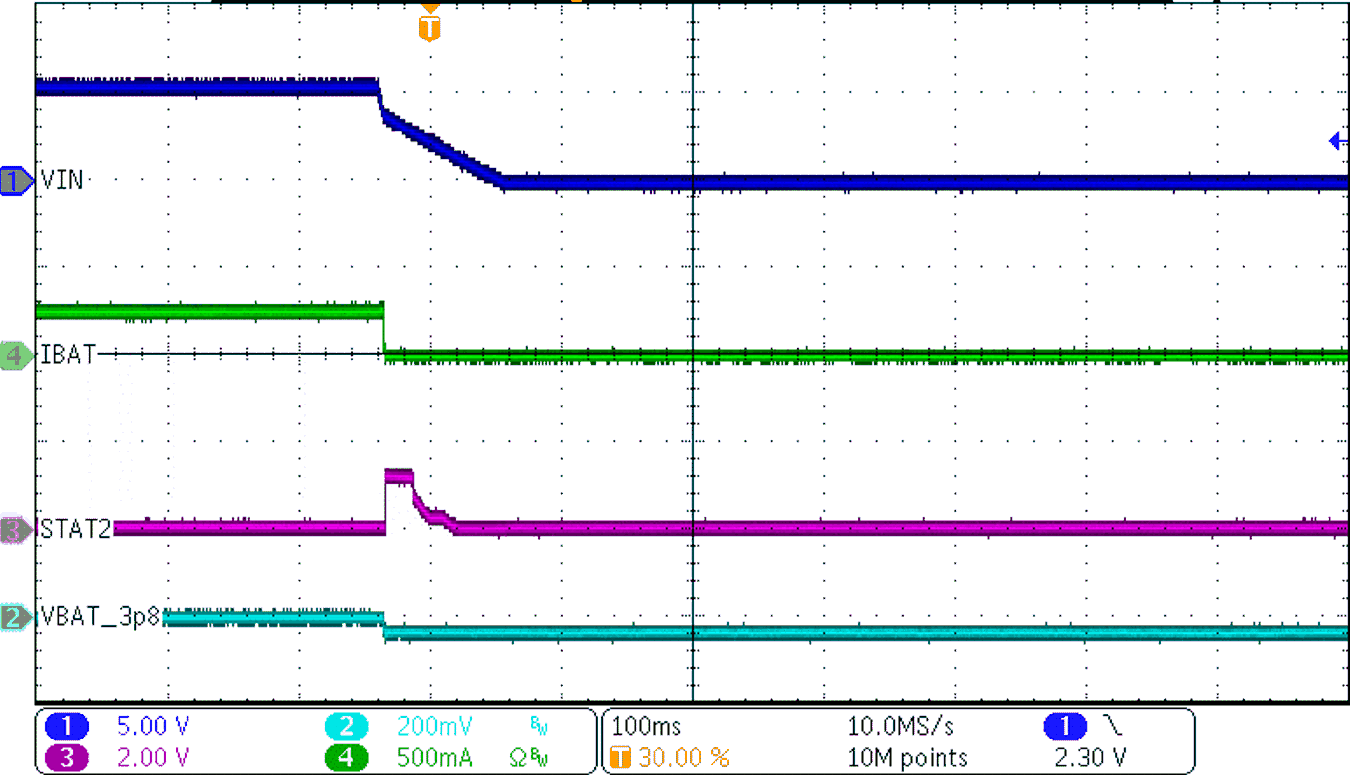
| VIN = 5 V → 0 V |
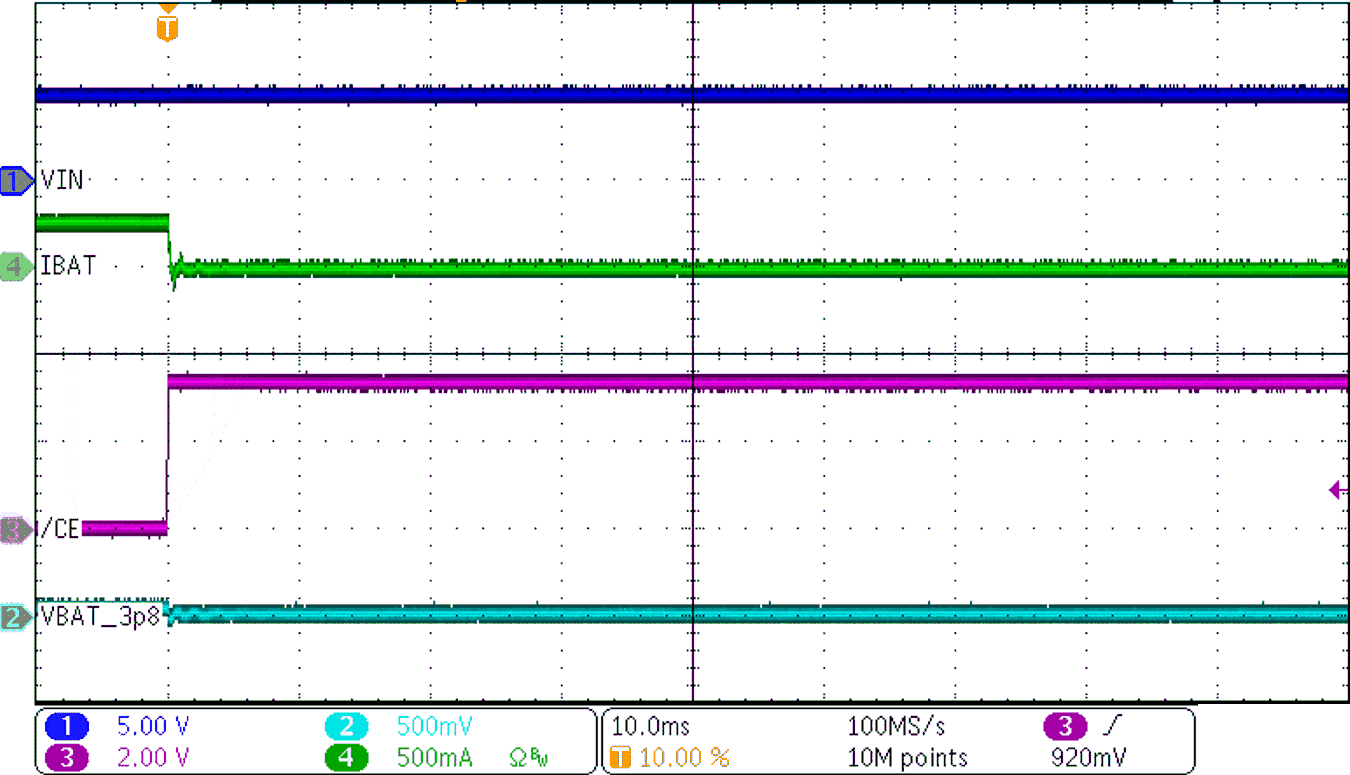
| CE = Low → High |
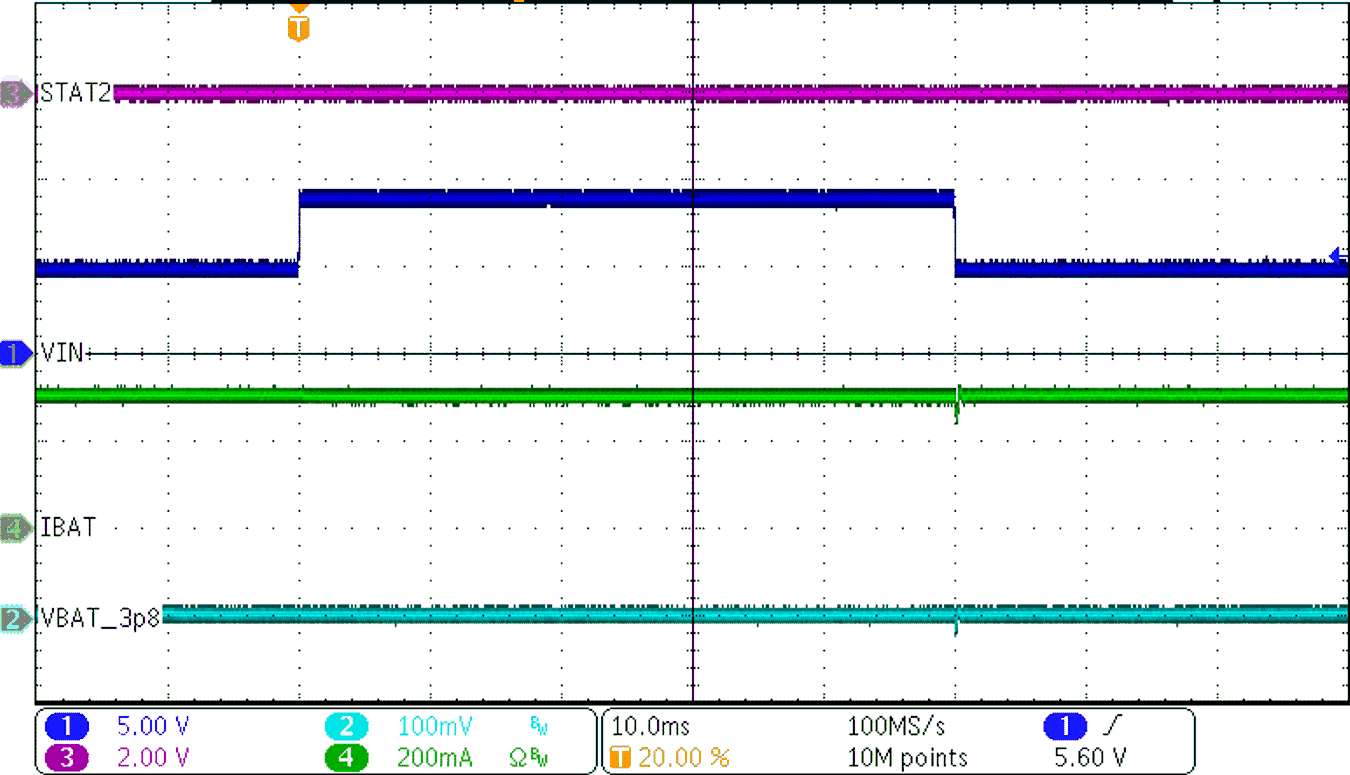
| VIN = 5 V → 9 V | VOUT = VSET = 4.2 V | |
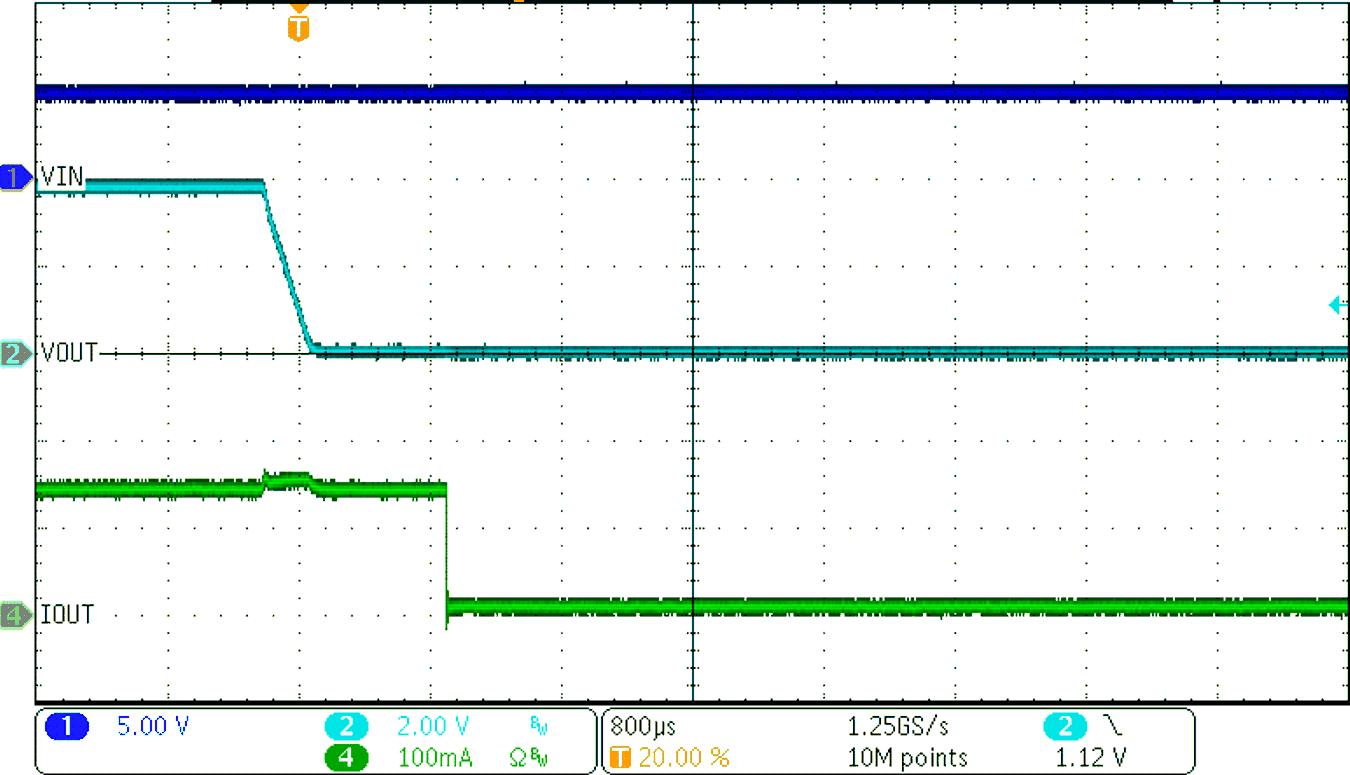
| VOUT = VSET = 4.2 V → 0 V | ||
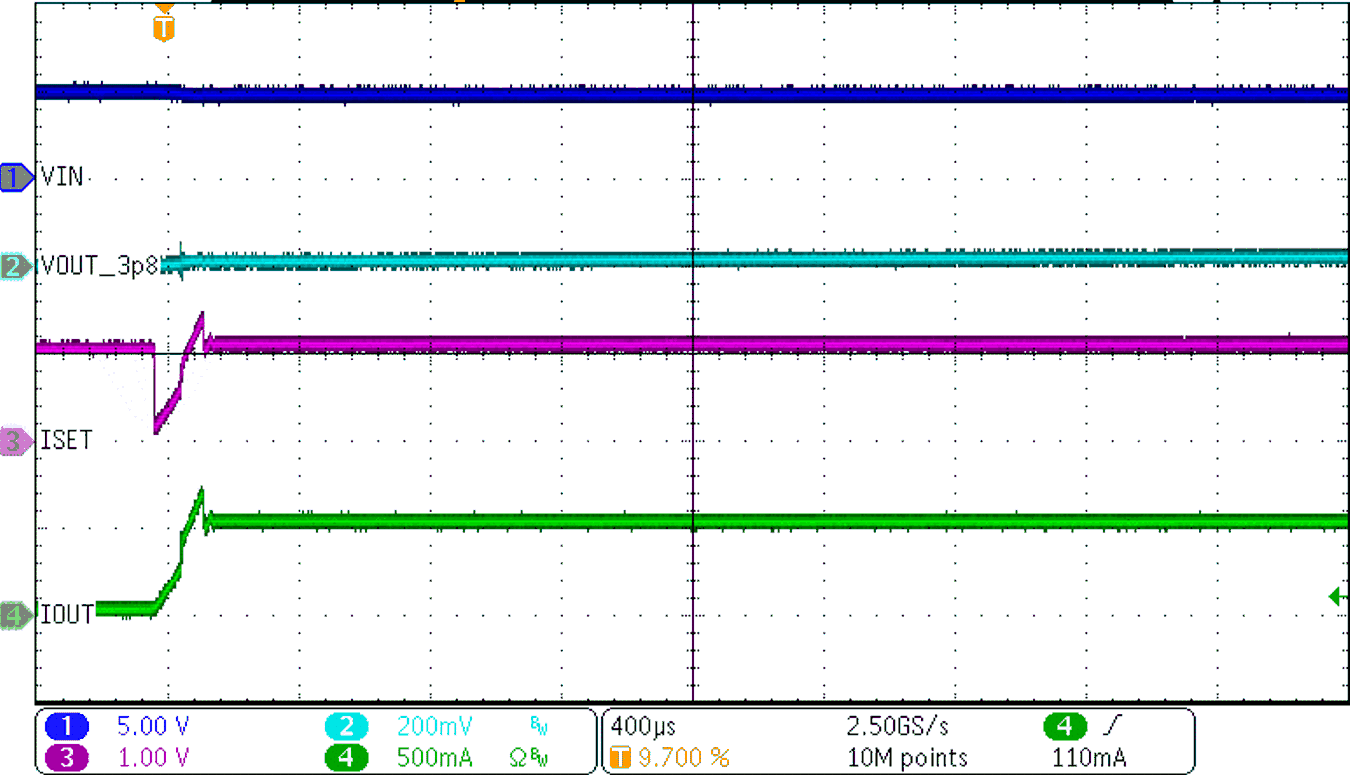
| ISET = 50 mA → 500 mA |
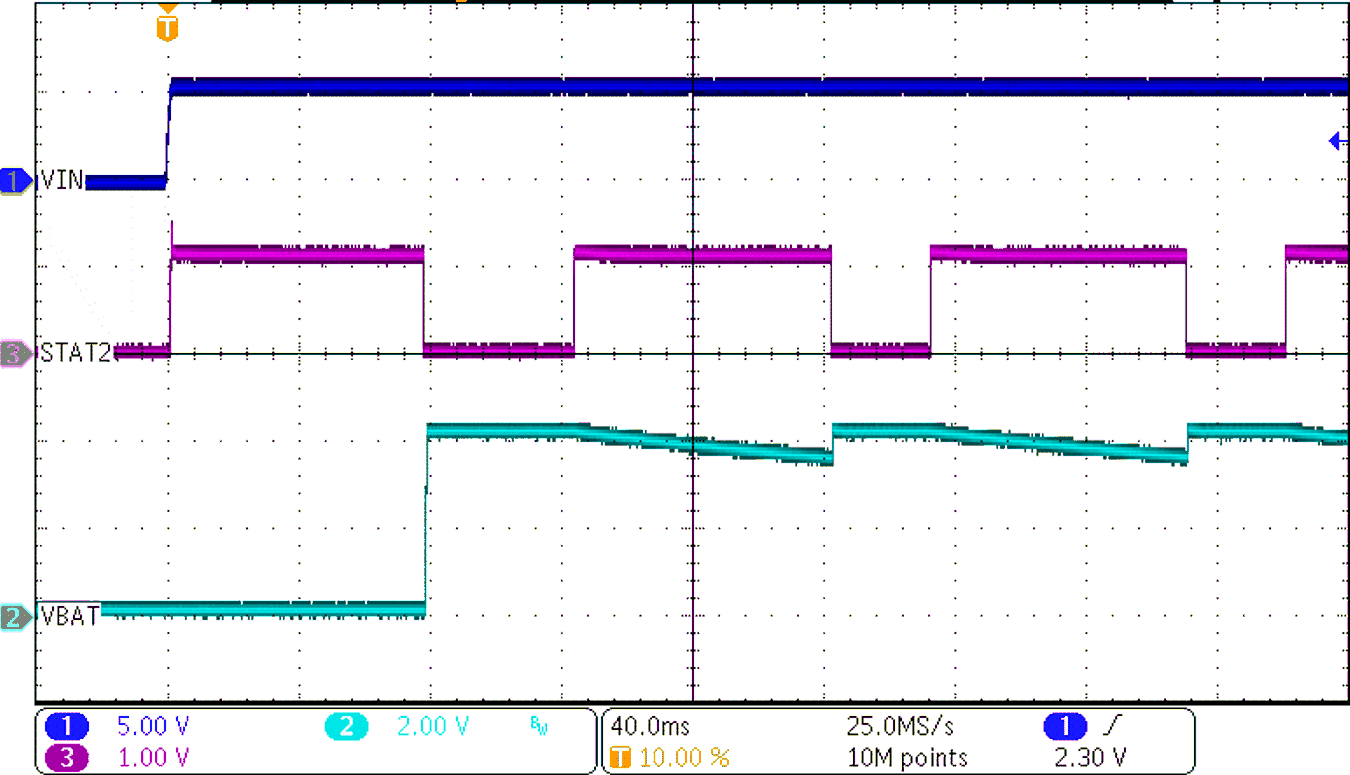
| RISET = 1.2 kΩ | OUT = open-circuit |
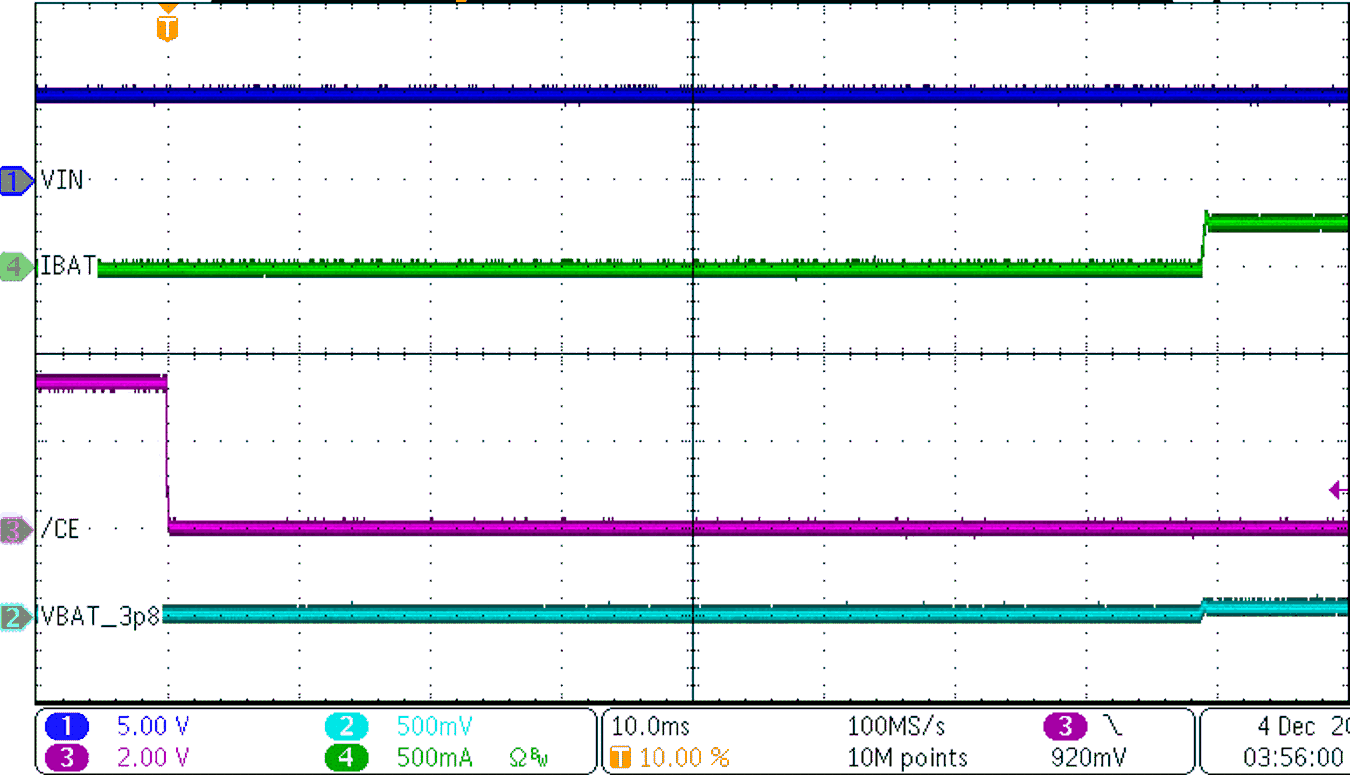
| CE = High → Low |
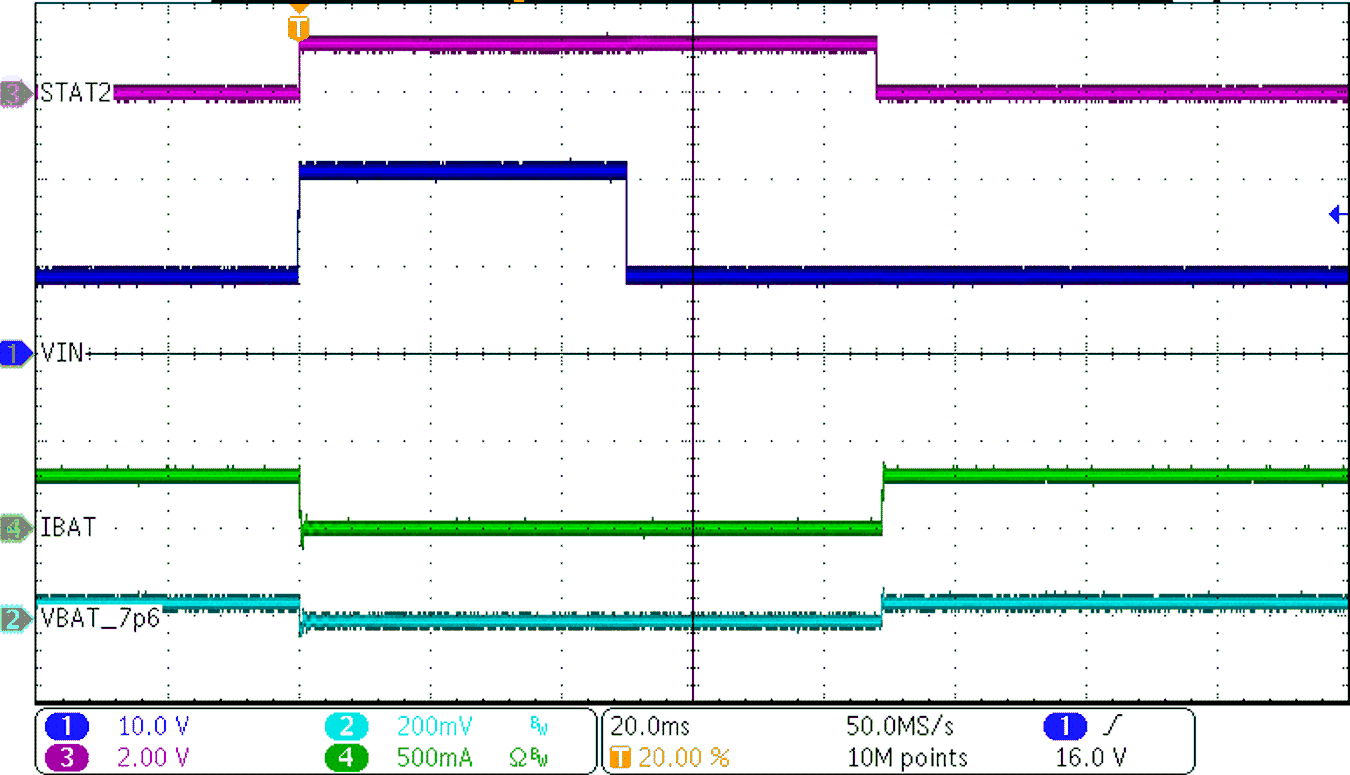 Figure 8-7 IN
OVP Response
Figure 8-7 IN
OVP Response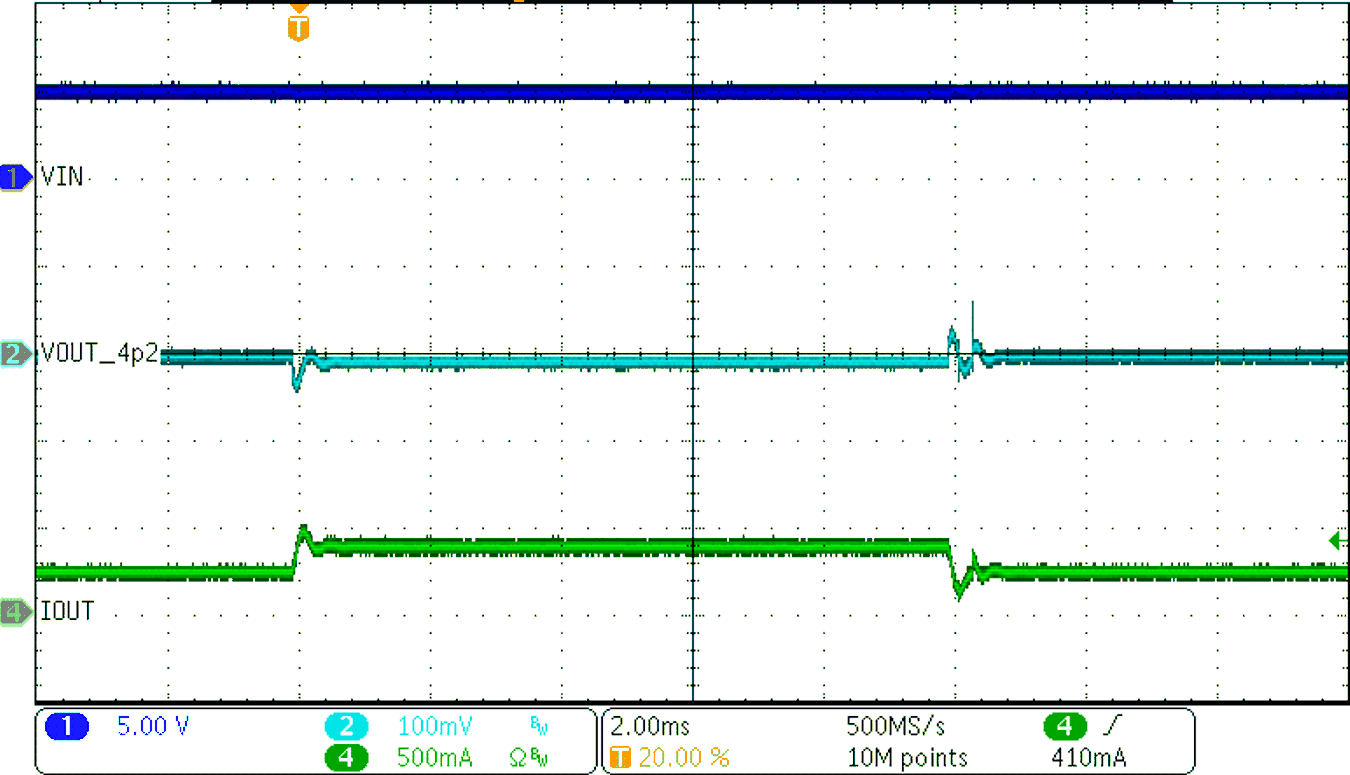
| VOUT = VSET = 4.2 V | ISYS = 0 mA → 500 mA | |
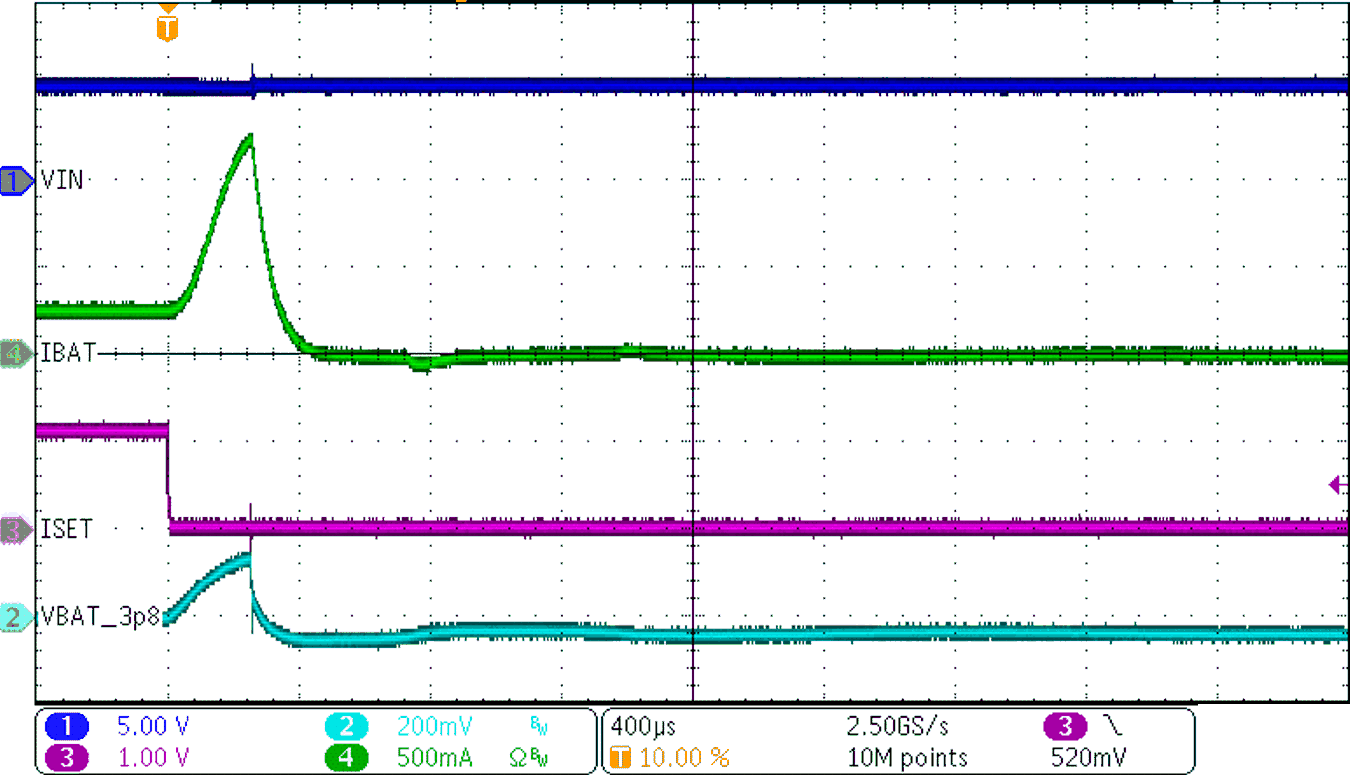
| ISET = 1.2 kΩ → 0 Ω | ||
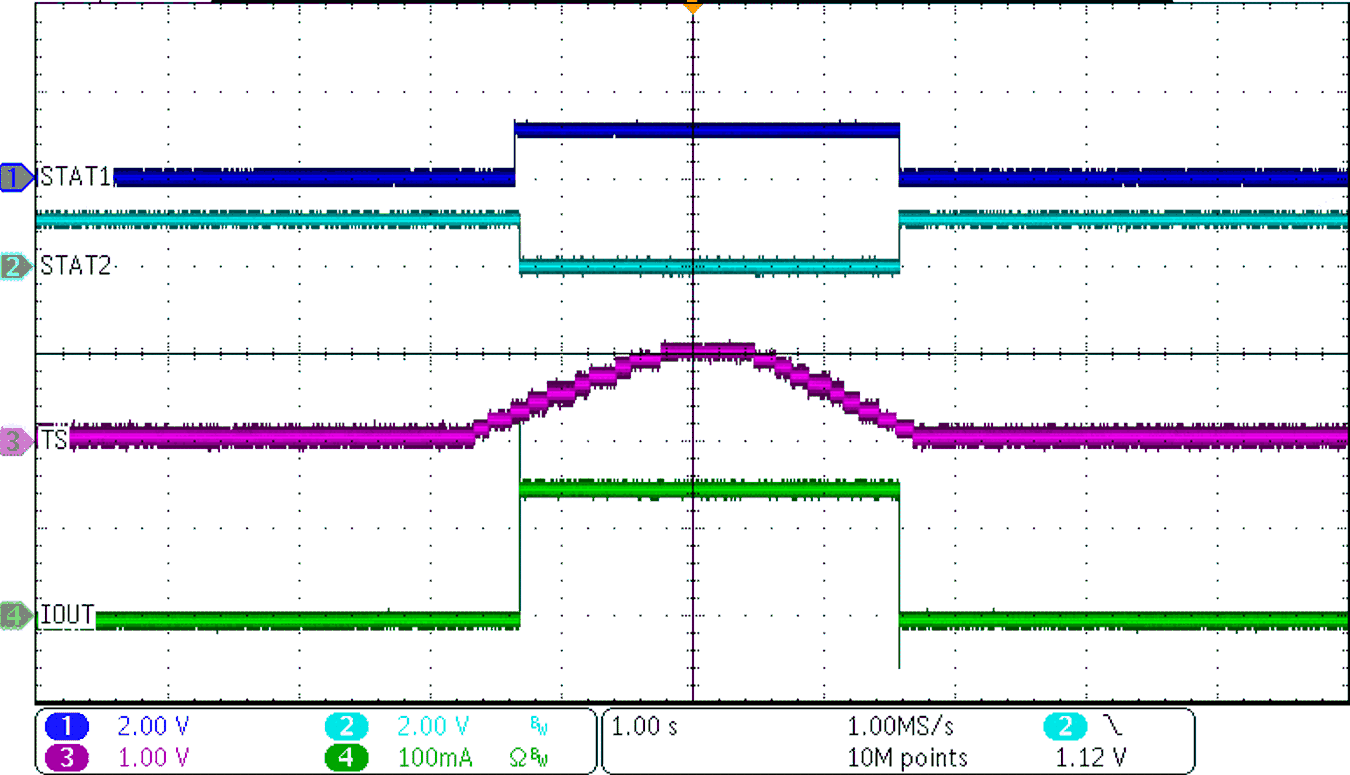 Figure 8-13 TS
Change Response
Figure 8-13 TS
Change Response